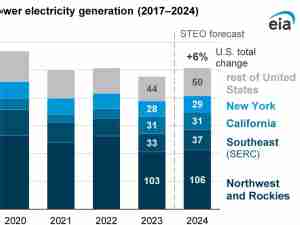Europe
TTF prices have declined sharply on the week – from about $20/Mmbtu to under $16/Mmbtu at the time of writing, easily breaking the near-term floor of the upper coal -to-gas switching limit.
However overall fundamentals point to a slight bullish skew for the coming week, driven by colder-than-normal weather and fluctuating wind generation in Northwest Europe.
The ongoing cold snap – which brought temperatures to 1.4 degrees centigrade below normal is now expected to last through end January amidst falling wind output, which will increase the call on gas for power and heating.
The potential for an extension of the outage at Freeport and the recent additional Force Majeure at NLNG will serve to limit the proliferating bearish sentiment of the past week. NLNG is believed to have cancelled around 2 cargoes in January due to feedgas reductions caused by pipeline vandalism.
The 30-day moving average utilization of the facility has declined to around 52%, down from the 2022 average of 66%.
Around 4% of Europe’s LNG imports originated in NLNG in December.
French nuclear availability is down to 72% , compared to 75% a week ago due to a nationwide strike against Emmanuel Macron’s pension reform plan.
Higher nuclear availability is crucial this year to limit a bullish impact of summer power demand on gas prices, as the mild winter may reduce hydro balances.
Fluctuating wind output in Germany and France has also pushed up ARA coal prices to nearly $175/tonne, up 2.7% on the week, reading through to higher gas prices.
At $16/Mmbtu prices, certain industrial facilities in Europe such as Ammonia manufacturers may be back in the black, suggesting prices will need to push higher to maintain the demand destruction required for the next two years.
Lower Russian pipeline flows into the EU– which are down ~6% on the week – is likely driven by lower buyer-side nominations as storage withdrawals may be prioritized over additional imports.
EU 27 +UK storage levels still remain very healthy at over 81%, and within 5% of the 5-year maximum.
Current withdrawal rates suggest storage levels will end the withdrawal season 16% higher than the 5-year maximum in end-March, which will cushion the market from supply uncertainties later in the year.
Asia
In Asia the week on week decline in LNG Prices to sub-$20/Mmbtu levels has now made spot LNG competitive in the power mix in countries that use Newcastle 6000 Kcal/Kg coal for power generation , whose price is still fluctuating about the $400/Tonne mark.
Colder than normal temperatures in the coming week are unlikely to impact the region’s fundamentals as LNG inventory levels remain extremely high.
Other signals in the region are bearish.
Prelude FLNG returned to production January 18, while the extended outage one of the QCLNG trains was shortened by 2 days.
Commercial and industrial activity in China is also likely to dim down until after the lunar new year in late January.
US
The week ended January 6th saw the overwhelmingly bearish signal of a 11 BCF storage injection during peak winter, which brought stocks to 2920 BCF, which is about 1% lower than the 5-year average.
The upcoming colder-than normal weather may result in a slight uptick in gas consumption, but a material bullish impact is unlikely as Freeport LNG remains offline.








